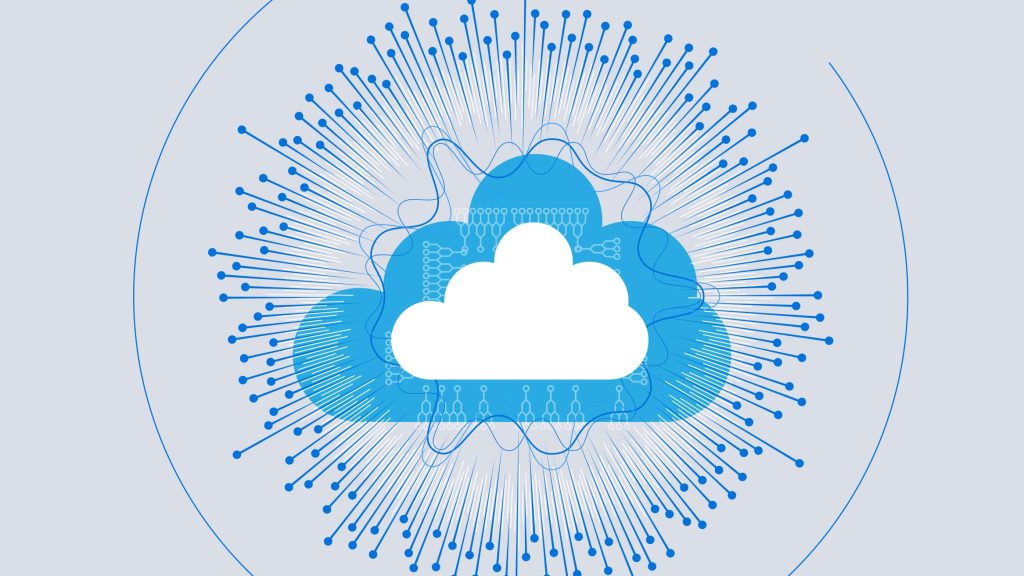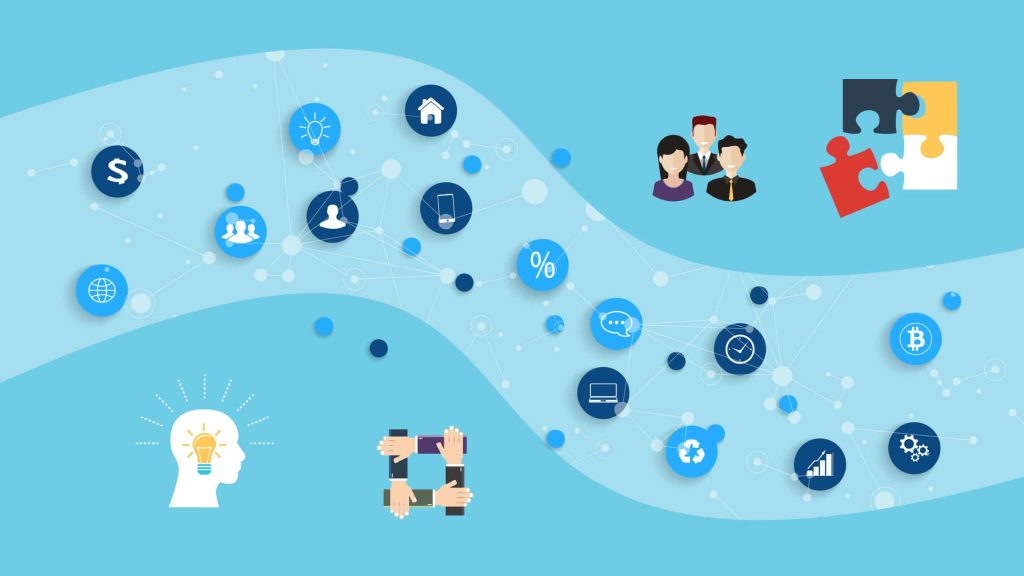How many of us really know what the cloud is? Oh sure, we know that the cloud involves storing and accessing stuff via the Internet, but do we understand the powerful transformational nature of cloud computing technology. Do we appreciate how it has changed and continues to change, the way we live and work?
Not that long ago if you mentioned the cloud, most people thought you were talking about the weather. As recently as 2012, Wakefield Research discovered that 51% of the people surveyed, most of whom were Millennials, thought that storm conditions could interfere with cloud computing. Later that same year, Business Insider reported only 16% understood the cloud to be a network of Internet-connected devices to store, access, and share data. So if you don’t know that much about the cloud, don’t feel bad. You’re not alone.
Most people, if they think of the cloud at all, know it simply as a place to keep iTunes, archive our favorite movies, or family pictures and videos. Consumers know the cloud as a storage service offered by Apple. Our knowledge of iCloud is usually associated with the company’s invitation to add more space. Then there’s Netflix. Millions of people access feature-length movie titles stored and delivered on-demand via cloud technology. Do you store and share large files via DropBox? Does your office use Microsoft Office 365?
This article won’t be describing the cloud per se. Nor will it attempt to explain the various types and configurations of clouds. But rather a high overview of how cloud technology transforms companies and whole industries. It will explore the way cloud technology changes the way we work with each other all over the world. Technology growth is accelerating at multiplying rates. This acceleration is due to all the technologies blending together into the cloud.
The Supernova

The Cloud is a Supernova
We use a soft fluffy metaphor like the cloud, but “the cloud” paints a misleading picture in our minds. The Pulitzer Prize-winning writer Thomas L. Friedman, in his book, THANK YOU FOR BEING LATE, prefers to call the cloud “the supernova.” A term originated by Mircosoft computer designer Craig Mundie. Why refer to it as “the supernova” and not “the cloud.” In the world of astronomy, a supernova is the explosion of a star. It’s a huge astrological event; in fact, the largest explosion that takes place in space.
So too, the cloud is an incredible release of energy. The energy reshapes every man-made system that our society has built. And now, every single person on the planet who can access the Internet can tap into its power. The only difference, Mundie points out, is that a star’s supernova only happens once. The computer supernova keeps releasing energy at an accelerating rate. It’s interesting to note that the components that make up the cloud continue to drive down in cost. The cost goes down while performance keeps going up.
Just as the discovery of fire was a game-changer back in the Stone Age, and Electricity lit the way from one century to the next in the late 19th Century, the cloud has fundamentally changed the modern world. There are more mobile devices on the planet than there are people. Soon everyone on the planet will be connected.
Go with the Flow
The cloud has large amounts of digital information moving in every direction. The information travels up and down. The white-water rapid current moves fast and with equal energy. You have to learn to go with the flow if you’re going to thrive. Like maintaining constant homeostasis, you have to go with the flow to keep your balance. You’ll be better equipped to look ahead, predict trends, and respond to the ever-changing market.

The Flow of Knowledge Stocks
In the past, the traditional idea was to go to college. Get an education. Find a job where you can apply that education. Show up. Do the work and you’d be fine. You’d be set for life. The focus was on one person having a stock of knowledge. Today, the focus has shifted to the flow of knowledge. As pointed out in the 2009 Harvard Business Review article “Abandon Stocks, Embrace Flows,” it’s no longer about having knowledge.
As the world accelerates knowledge tends to become outdated at a faster rate. The premium shifts to a focus on updating knowledge. Choice marketable characteristics will be a high level of curiosity, and staying in touch and maintaining the pulse on the latest advancements. As the world accelerates, stocks of knowledge depreciate at a faster rate. This is true for items you buy as well. Notice how quickly product life cycles have compressed. Even the most successful products fall by the wayside quicker than before. We have to continually learn by participating in relevant flows of new knowledge. And it’s not just a matter of diving into the flow when we feel like it. Participation and benefiting from this flow of knowledge requires that we must also contribute to it on an on-going basis.
This is the world of the cloud. This is where workspaces connect globally. Ideas and knowledge are exchanged freely. The so-called little guy can compete with the big guy. In the March 2016 study “Digital Globalization: The New Era of Global Flows” by the McKinsey Global Institute, we see in great detail how the world is more interconnected than ever.
Many enterprise companies are taking advantage of this interconnectivity. They’re leveraging the technology in order to take advantage of the knowledge flows moving around the planet. For example, Friedman describes in his book THANK YOU FOR BEING LATE, how General Electric supplements its internal resources of engineers to run global contests to see who can come up with the best design solutions. One such contest received 697 entries from companies and individuals all over the world.
It’s All About Interconnectivity
This interconnectivity is expanding “instantaneous exchanges of virtual goods.” The cloud enables digitized financial flows to happen at unfathomable rates. The science journal Nature published “Physics in Finance: Trading at the Speed of Light.” It presents an industry driven by ever-increasing speed and complexity. The article reports that more than 100,000 trades occur in less than a second. That’s for a single customer.
High-frequency trading relies on several things. It needs fast computer algorithms for deciding what and when to buy and sel. Live feeds of financial data are needed. And high-frequency trading also requires about $15,000 a month to rent fast links.
Moving faster also increases the likelihood of mistakes. In 2012, a flaw in the algorithms of KNIGHT CAPITAL – one of the largest U.S. high-frequency firms, caused a loss of $440 million in 45 minutes. The algorithm accidentally bought at a higher price than it sold.

Data speedbumps act like traffic cops slowing down the flow of traffic.
Some trading firms established a way to keep the traffic from moving too fast. They introduced a kind of digital speed bump. Slowing down the flows of digital traffic by 350 microseconds. Apparently this was all time traders needed to benefit from faster feeds. The inclusion of a speed bump, all 350 microseconds worth, meant we’ve already surpassed the optimal speed for trading.
Speed & Complexity Are Free
Because information moves much faster now, global markets become more interdependent on each other. Remember when China made some financial missteps in 2015. It caused a ripple effect that stretched across the planet. Americans felt it immediately. On August 26, 2015, CNN.com reported:
“The American stock market has surrendered a stunning $2.1 trillion of value in just the last 6 days of market chaos. The enormous losses reflect deep fears gripping markets about how the world economy will fare amid a deepening economic downturn in China. The Dow, S&P 500, and Nasdaq have all tumbled into correction territory. It is their first 10% decline from a recent high since 2011. The dramatic retreat on Wall Street has been fueled by serious concerns about the fallout of China’s economic slowdown.”
PayPal has become one of the most important drivers of digital finance. The company set out to democratize financial services by enabling every citizen to move and manage money. The explosion of smartphones gave users all the power of a bank branch at their fingertips. The incremental cost of adding a customer is nearly zero. What is common-place for Americans to do, send money to someone, pay a bill, or get a loan, was now simple, easy, and nearly free for 3 billion people around the world. These were the people who would have to stand in hours to change their currency and stand in another line for hours to pay a bill. PayPal doesn’t rely on FICO scores the way a traditional bank or credit card company does. Instead, they use their own big data analytics based on your actual transaction activity on their site. This gives them a more accurate picture of your creditworthiness. The result: instant loans to more people around the world with a higher rate of payback. PayPal is one of the companies eliminating the need for cash. PayPal is also experimenting with “blockchain” for validating and relaying global transactions through multiple computers.
Cloud technology has brought with it a period of adjustment. We need time to absorb, learn, and get used to the idea of working differently. The cloud will make economies measurably more productive. Because of it Individuals, groups, and organizations are now on a level playing field. These individuals, groups, and organizations can shape the world around them in unprecedented ways. And they can do it with less effort.
Leverage & Synergy
There has never been a better time to become a maker, an inventor, a start-upper or an innovator. It’s leverage and synergy in action as never before.

Leveraging Technology
Consider some of these examples:
Uber
The world’s largest taxi company owns no taxis
The most popular media owner creates no media
Alibaba
The world’s most valuable retailer has no inventory
Airbnb
The largest accommodation provider owns no real estate
THE DOUBLE-EDGED SWORD
Technology has always been an amplifier of the best and worst of humanity. It tends to magnify our psychological and spiritual condition both good and bad. Cloud technology is a double-edged sword. On one hand, it empowers the individual, groups, and organizations as never before. Companies communicate faster and more fluidly. Small boutique shops can become multi-national enterprises in a short amount of time. More brains are connected globally. The smallest voices can be heard everywhere for the first time.
Alternately, technology can be used to belittle and disempower. Just as the cloud enables builders and makers, it also gives power to breakers. One person can do more damage more cheaply and more easily. Take Navinder Singh Sarao for example. Sarao, operating from one computer on a network connection out of his parent’s house in West London, single-handedly manipulated the U.S. Stock Market into losing a trillion dollars in less than a half-hour. He “spoofed” the Chicago Mercantile Exchange into setting off a terrible chain reaction. Spoofing is an illegal technique of flooding the market with bogus buy and sell orders so that other traders, both human and machine, are fooled into helping the perpetrator buy low or sell high. He had developed his algorithms to alter how his orders would be perceived by other computers.
Big forces can come out of nowhere and crush your business. You’ll never see them coming. The mobile broadband-supernova is a double-edged sword. How it’s used depends on the values and tools we want to put into place.
WE BECOME WHAT WE BEHOLD

We shape our tools and then our tools shape us.
In summation, the cloud, our technological broadband-supernova, is here to stay. It won’t be the same cloud a few months from now, but it’s here to stay. And things will continue to accelerate. It’s going to be difficult for many to keep up. Keeping up may be one of the great challenges facing society in the decades to come.
In answering the question, “Why is the world changing so fast?” Dr. Eric C. Leuthardt states in his “Brains and Machines” blog:
The reason for accelerating change is similar to why networked computers are so powerful. The more processing cores you add, the faster any given function occurs. Similarly, the more integrated that humans are able to exchange ideas the more rapidly they’ll be able to accomplish novel insights.
Different from Moore’s Law, which involves the compiling of logic units to perform more rapid analytic functions, increased communication is the compiling of creative units (i.e. humans) to perform every more creative task.
A great primer for anyone interested in understanding the transformational power of cloud technology is Thomas L. Freidman’s 2016 book THANK YOU FOR BEING LATE: AN OPTIMIST’S GUIDE TO THRIVING IN THE AGE OF ACCELERATIONS.




